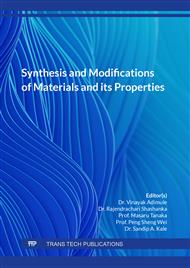p.35
p.47
p.59
p.71
p.85
p.91
p.101
p.107
p.113
Covalent Immobilization of REDV Peptide on Heparin Coating Promotes Selective Adhesion of Endothelial Cells
Abstract:
Forming an endothelial cell (EC) monolayer on the surface of blood-contacting devices is an ideal way to improve their blood compatibility, this process is known as endothelialization. Heparin is a proteoglycan with a strong negative charge, which is a commonly used antithrombotic agent. Heparin coatings also has been successfully used to improve the hemocompatibility of various biomaterials. In this study, a short peptide Arg-Glu-Asp-Val (REDV) with specific affinity for endothelial cells was covalently conjugated with maleimide-functionalized heparin. The conjugate retains the negative charge of heparin and can be directly immobilized on the surface of positively charged poly-L-lysine. This specific reaction to the carboxyl group of heparin could potentially reduce the shedding and steric hindrance effects of REDV peptide and enhancing the affinity and selectivity of heparin for EC.
Info:
Periodical:
Pages:
85-89
Citation:
Online since:
August 2022
Authors:
Keywords:
Price:
Сopyright:
© 2022 Trans Tech Publications Ltd. All Rights Reserved
Share:
Citation:



